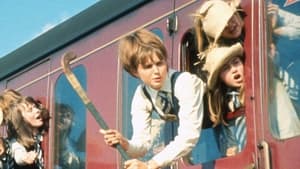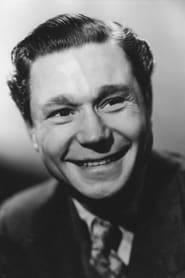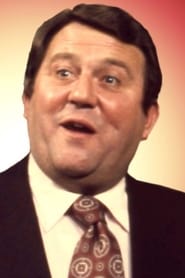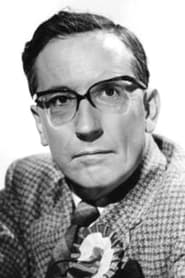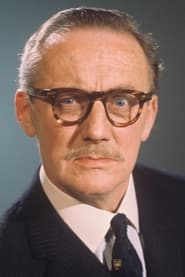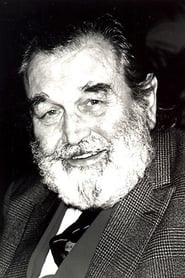Cast
View AllFrankie Howerd
as Alphonse of Monte Carlo / Alfred Askett
Dora Bryan
as Amber Spottiswood
George Cole
as 'Flash' Harry
Reg Varney
as Gilbert
Raymond Huntley
as Sir Horace, the Minister
Richard Wattis
as Manton Bassett
Portland Mason
as Georgina
Terry Scott
as Policeman
Eric Barker
as Culpepper Brown
Godfrey Winn
as Truelove
Colin Gordon
as Noakes
Desmond Walter-Ellis
as Leonard Edwards
Arthur Mullard
as Big Jim
Norman Mitchell
as William
Cyril Chamberlain
as Maxie
Crew
Director
- Frank Launder
- Sidney Gilliat
Writer
- Frank Launder
- Sidney Gilliat
- Leslie Gilliat
- Ivor Herbert
Producer
- Leslie Gilliat
Reviews
John Chard
Jolly Hockey Sticks Part 4.
The fourth part of the St. Trinian's themed films is the first to be shot in colour, and also the point where someone should have realised that this series had run out of steam. Based on Ronald Searle's demonic schoolgirls, this outing cribs off of the topical Great Train Robbery of the 60s, retains George Cole as a reassuring presence, while adding Dora Bryan and Frankie Howerd for some acting solidification.
It's not a bad film as such, in fact the last quarter, where a whole host of train shenanigans come into play, is great fun, it's just that it feels tired, less risky, like the makers were hedging their bets to get a box office winner (which came to fruition). Fast framing is a bit of a cheat, Howerd is wasted - or sleepwalking through the film? But Bryan is on hand for a bit of quality while the girls are all boisterous and minxy.
Enjoyable enough for those so inclined, even if it's utterly forgettable come the final credits. 6/10
Mar 25, 2016
CinemaSerf
Though George Cole stayed put as the wily "Flash Harry", the stylishness and mischief of the Sim/Grenfell films has been replaced by the more crass, innuendo-laden and colour performances from Frankie Howerd and Dora Bryan. Raymond Huntley ("Sir Horace") is the government minister who decides to allocate £85,000 to locate the ailing school and to keep it up to date with the times. Thing is, it's headmistress "Amber" (Bryan) is his bit-on-the-side and she uses the cash to ensure the school becomes little better than a state of the art gambling facility that wouldn't have looked out of place in Atlantic City. Unbeknown to them all though, the old building in which their school is now housed has already been used for a nefarious purpose by some train robbers. Needless to say, they want access to their ill-gotten gains hidden under the floorboards - and when the unruly girls get wise to their plotting, shenanigans galore ensue! Bryan and Howerd both have good comedy coming and a degree of chemistry, but the latter is too domineering as an actor and as character - and as I was never really his biggest fan anyway, I found he rather robbed the thing of any subtlety or hint of comedic sophistication. If you like, "St. Trinians" is now steaming towards "Carry On" territory and leaving behind it the charming boisterousness of previous iterations. It isn't terrible and some of the humour is still quite perky, but these have run their course now, I'd say.
Nov 6, 2022
Thematic Analysis
The Great St. Trinian's Train Robbery represents a fascinating example of Comedy/Crime/Family cinema, offering viewers a unique perspective on the human experience and societal structures. The film's approach to its themes demonstrates a creative vision that distinguishes it within its genre.
Director Frank Launder brings their distinctive visual style to this film, continuing their exploration of themes seen in their previous works while adding new elements. Their approach to pacing and visual storytelling creates a viewing experience that rewards close attention.
Released in 1966, the film exists within a cultural context that now offers viewers historical perspective on the social issues of that era. Its reception demonstrates the diverse reactions to its artistic choices and its place in cinema history.
Did You Know?
- The production of The Great St. Trinian's Train Robbery took approximately 16 months from pre-production to final cut.
- The final cut of the film runs for 93 minutes, though the director's initial assembly was reportedly 141 minutes long.
- The director insisted on using practical effects whenever possible, reserving CGI for only the most necessary scenes.
- The film contains approximately 1343 individual shots.
- The musical score contains over 69 unique compositions.
Historical Context
- In 1966, when this film was released:
- Counterculture movements were challenging traditional values.
- Social and cultural revolution was transforming Western societies.
- The film industry was dominated by major studios, with independent cinema still in its early development.
How This Film Stands Out
While The Great St. Trinian's Train Robbery shares thematic elements with other films in its genre, it distinguishes itself through its unique approach to storytelling, visual style, and character development.
Unlike Death Goes to School, which focuses more on action than character development, The Great St. Trinian's Train Robbery offers a fresh perspective through its innovative visual language and narrative structure.
While films like The Belles of St. Trinian's and Scooby-Doo and the Ghoul School explore similar territory, The Great St. Trinian's Train Robbery stands apart through its deeper exploration of its central themes and more complex characterization.
This film's unique contribution to cinema lies in its thoughtful balance of entertainment value and thematic depth, making it a valuable addition to its genre.
Details
- Release Date: March 11, 1966
- Runtime: 1h 33m
Where to Watch

